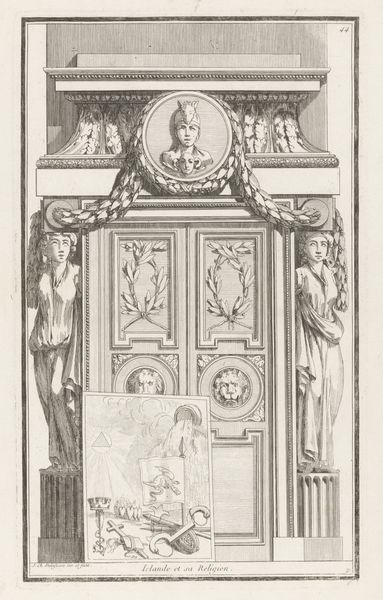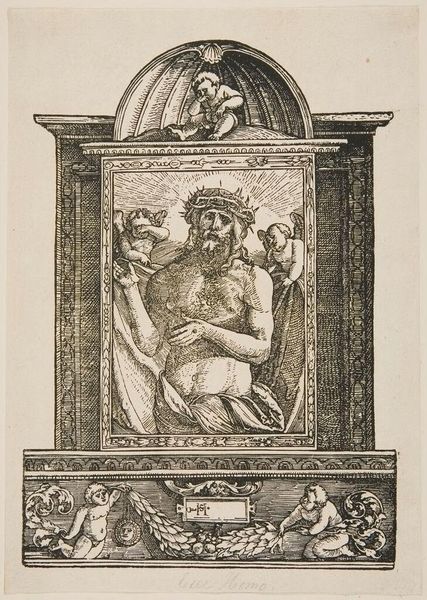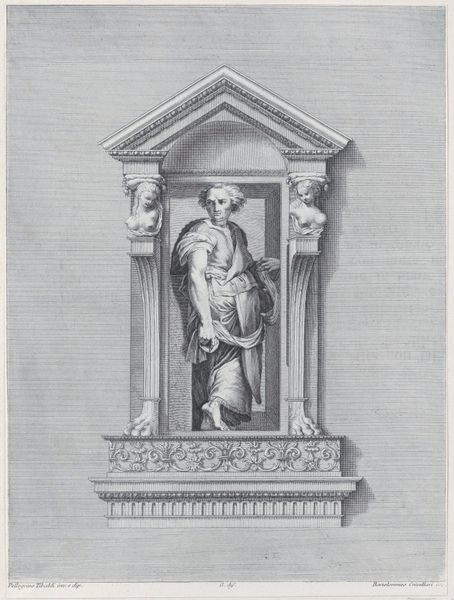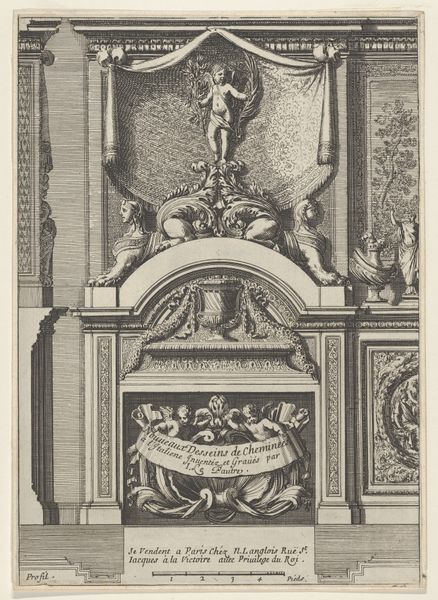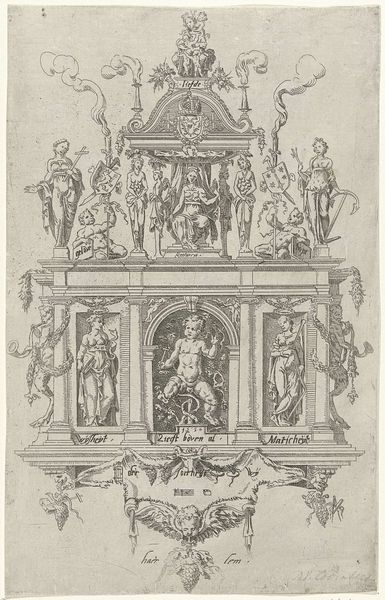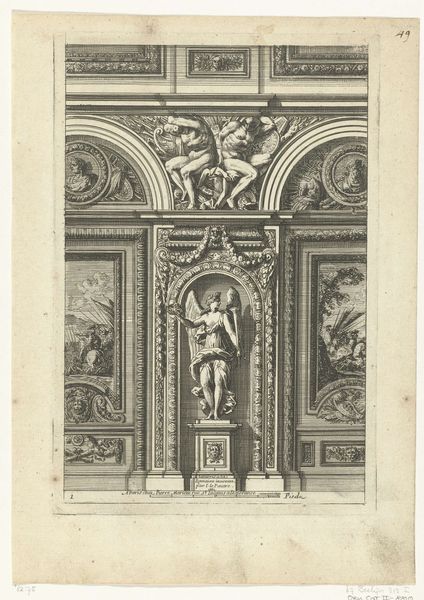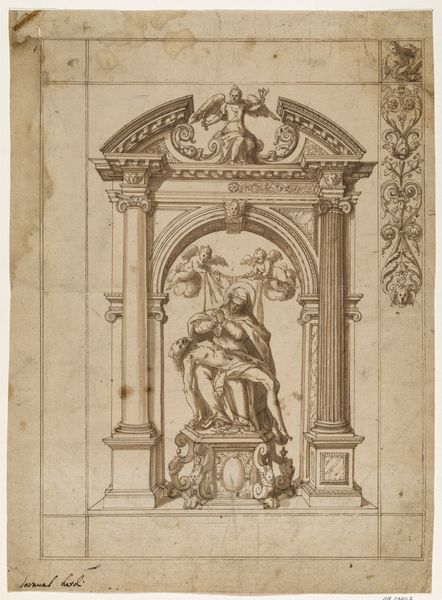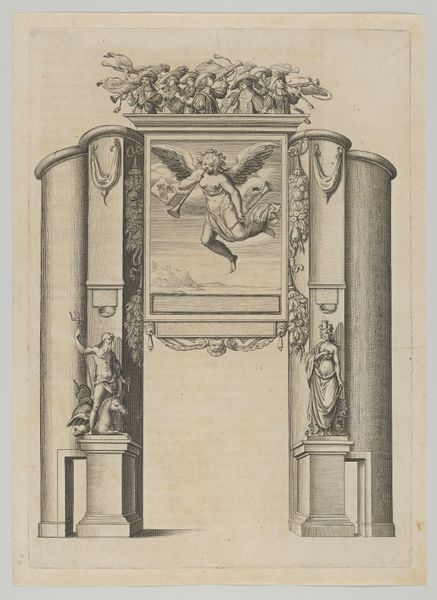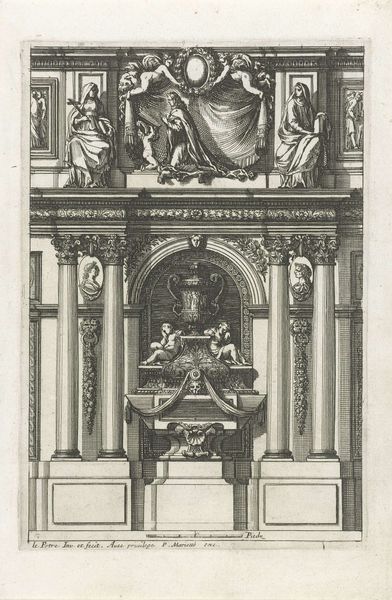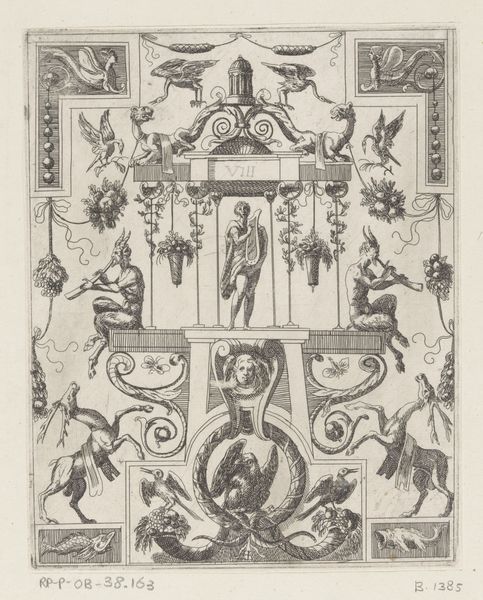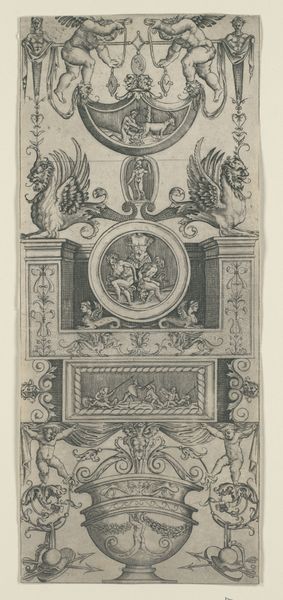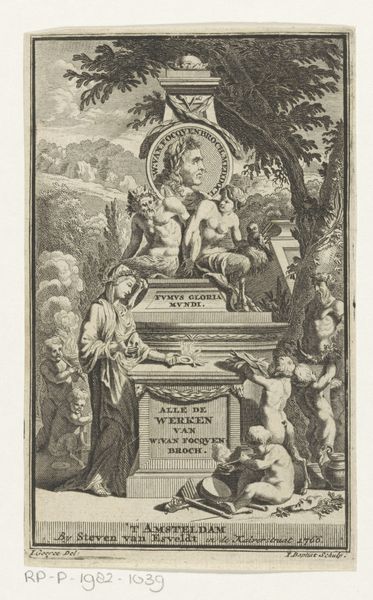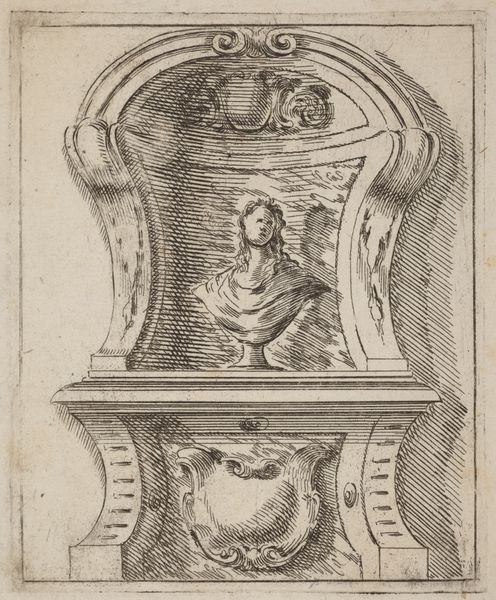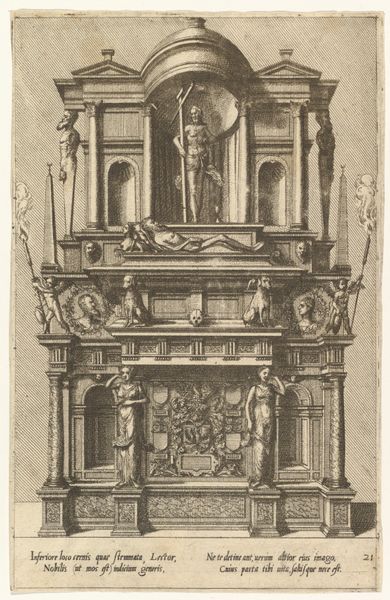
Dimensions: Sheet: 11 11/16 × 8 15/16 in. (29.7 × 22.7 cm)
Copyright: Public Domain
Editor: Here we have Hans Schäufelein’s "Ecce Homo / Man of Sorrows" from 1922, a woodcut engraving now at the Met. It's striking, the sharp lines and the raw emotion… it almost feels like a glimpse into a tormented dream. What do you see in this piece, beyond the obvious religious context? Curator: Tormented is a perfect word. For me, it’s the collision of vulnerability and power that really gets under my skin. Schäufelein wasn’t just depicting Jesus; he was exploring the very nature of human suffering and divine sacrifice. The almost crude quality of the woodcut only intensifies the feeling, don’t you think? It avoids sentimentality. Does it stir feelings in you regarding human history? Editor: Absolutely. The roughness, it's not reverent in a conventional sense, it feels much more…personal. But there’s also a weird classical grandeur in the architectural frame and the little cherubs – which clashes. Is that intentional, do you think? Curator: I think that’s key. Remember, the 1920s were turbulent times, weren't they? A world ravaged by war. Perhaps Schäufelein used the traditional imagery to critique the old order. How would you read it, then, considering its time? Editor: That makes sense. Seeing it as a commentary on the suffering of the time gives it a whole new layer. It’s not just religious, it’s human. Curator: Exactly. And the beauty is, someone else will see something entirely different. That's art, isn’t it? To prompt questions rather than give answers. Editor: I hadn’t thought of the historical context that way. Now it’s so much more complex and moving. Curator: That’s the joy of looking, really. Shifting perspectives and continuous unveiling.
Comments
No comments
Be the first to comment and join the conversation on the ultimate creative platform.
